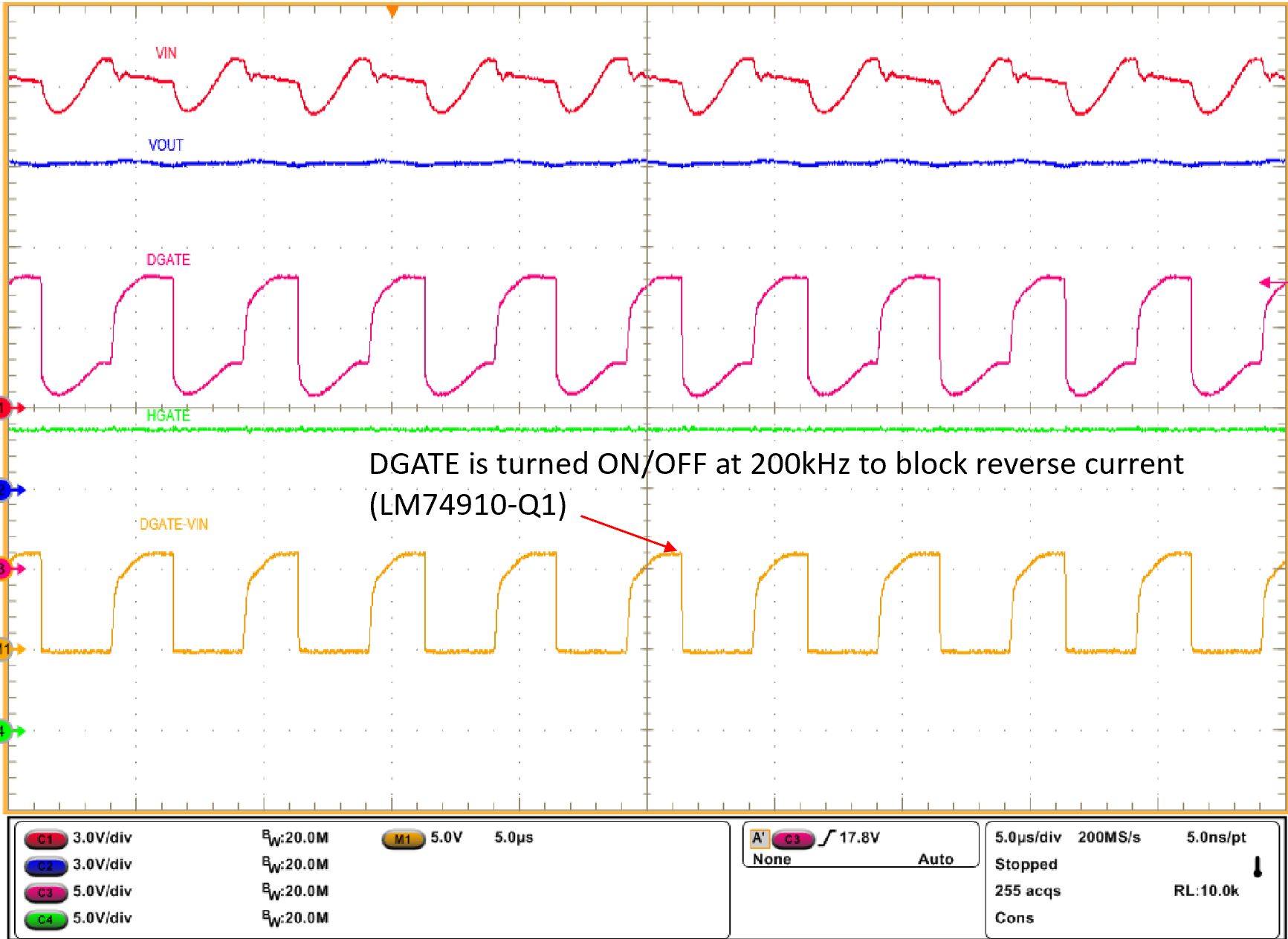ZHCSO86B december 2022 – july 2023 LM74900-Q1 , LM74910-Q1
PRODUCTION DATA
- 1
- 1 特性
- 2 应用
- 3 说明
- 4 Revision History
- 5 Device Comparison Table
- 6 Pin Configuration and Functions
- 7 Specifications
- 8 Parameter Measurement Information
-
9 Detailed Description
- 9.1 Overview
- 9.2 Functional Block Diagram
- 9.3 Feature Description
-
10Applications and Implementation
- 10.1 Application Information
- 10.2
Typical 12-V Reverse Battery Protection Application
- 10.2.1 Design Requirements for 12-V Battery Protection
- 10.2.2 Automotive Reverse Battery Protection
- 10.2.3
Detailed Design Procedure
- 10.2.3.1 Design Considerations
- 10.2.3.2 Charge Pump Capacitance VCAP
- 10.2.3.3 Input and Output Capacitance
- 10.2.3.4 Hold-Up Capacitance
- 10.2.3.5 Selection of Current Sense Resistor, RSNS
- 10.2.3.6 Selection of Scaling Resistor (RSET) and Short-Circuit Protection Setting Resistor (RSCP)
- 10.2.3.7 Overcurrent Limit (ILIM), Circuit Breaker Timer (TMR), and Current Monitoring Output (IMON) Selection
- 10.2.3.8 Overvoltage Protection and Battery Monitor
- 10.2.4 MOSFET Selection: Blocking MOSFET Q1
- 10.2.5 MOSFET Selection: Hot-Swap MOSFET Q2
- 10.2.6 TVS Selection
- 10.2.7 Application Curves
- 10.3 Addressing Automotive Input Reverse Battery Protection Topologies With LM749x0-Q1
- 10.4 Power Supply Recommendations
- 10.5 Layout
- 11Device and Documentation Support
- 12Mechanical, Packaging, and Orderable Information
10.2.2.2 AC Super Imposed Input Rectification: ISO 16750-2 and LV124 E-06
Alternators are used to power the automotive electrical system and charge the battery during normal runtime of the vehicle. Rectified alternator output contains residual AC ripple voltage superimposed on the DC battery voltage due to various reasons which includes engine speed variation, regulator duty cycle with field switching ON/OFF and electrical load variations. On a 12-V battery supply, alternator output voltage is regulated by a voltage regulator between 14.5 V to 12.5 V by controlling the field current of alternator's rotor. All electronic modules are tested for proper operation with superimposed AC ripple on the DC battery voltage. AC super imposed test specified in ISO 16750-2 and LV124 E-06 requires AC ripple of 2-V peak-peak on a 13.5-V DC battery voltage, swept from 15 Hz to 30 kHz. LM74900-Q1 rectifies the AC superimposed voltage by turning the MOSFET Q1 OFF quickly to cut-off reverse current and turning the MOSFET Q1 ON quickly during forward conduction. Active rectification of 2-V peak-peak 30-kHz AC input by LM749x0-Q1 is shown in Figure 10-3. LM74910-Q1 has higher DGATE strength and is capable of achieving active rectification at AC superimpose frequency of 200-kHz as shown in Figure 10-4. Fast turn off and quick turn ON of the MOSFET reduces power dissipation in the MOSFET Q1 and active rectification reduces power dissipation in the output hold-up capacitor's ESR by half.
 Figure 10-3 AC Super Imposed Test – 2-V Peak-Peak 30
kHz
Figure 10-3 AC Super Imposed Test – 2-V Peak-Peak 30
kHz Figure 10-4 AC Super Imposed Test – 2-V Peak-Peak 200 kHz
(LM74910-Q1)
Figure 10-4 AC Super Imposed Test – 2-V Peak-Peak 200 kHz
(LM74910-Q1)